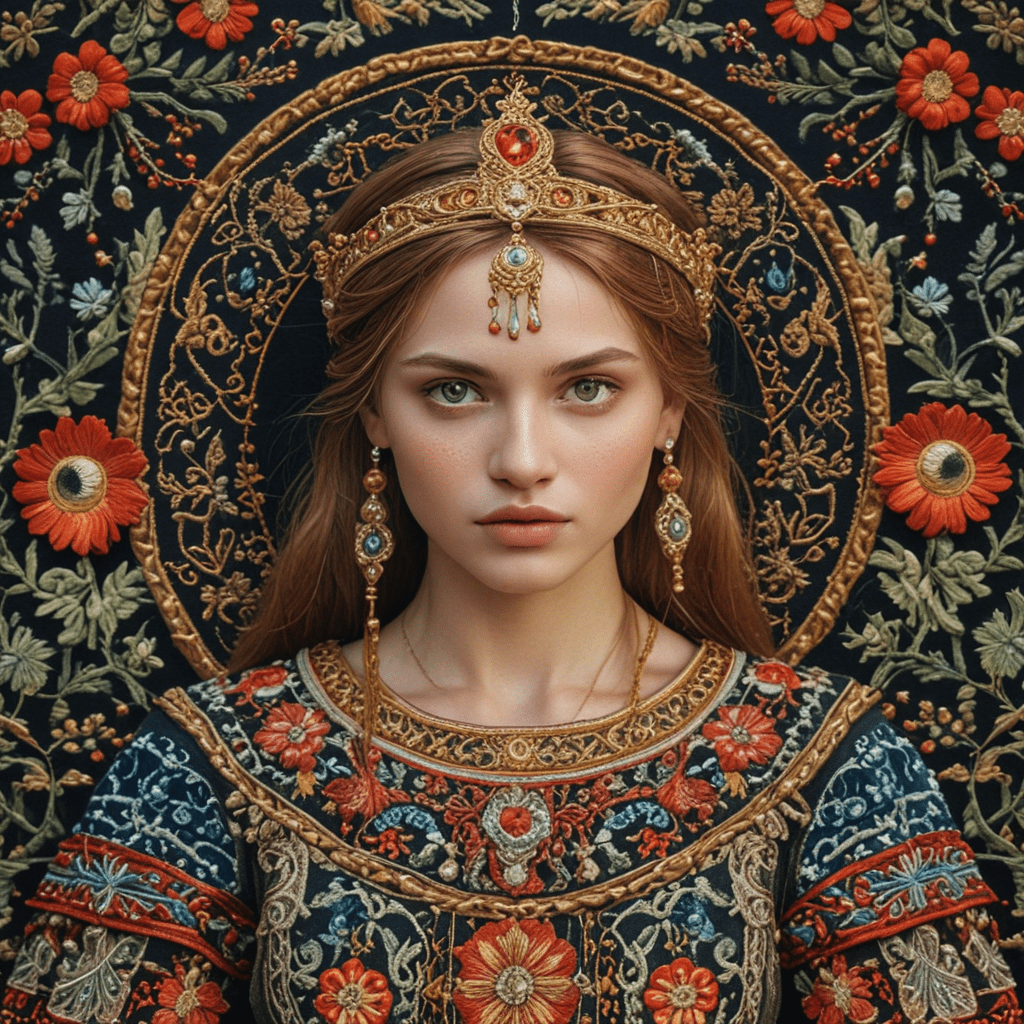1. Introduction: The Significance of Embroidery in Slavic Culture
Embroidery, an intricate art form, holds profound significance in Slavic culture. For centuries, Slavic women have adorned textiles with vibrantly colored threads, weaving ancient beliefs, traditions, and symbols into every stitch. More than mere embellishment, Slavic embroidery serves as a testament to a rich heritage, connecting the living with the divine and the past with the present.
2. The Supernatural Beliefs and Traditions Influencing Slavic Embroidery
Slavic embroidery is deeply influenced by the mythology and folklore that permeate the culture. The ancient Slavs believed in a plethora of supernatural beings, including deities, spirits, and nature spirits. Embroidered designs often depicted these entities, inviting their protection and blessings upon the wearer or household. Moreover, embroidery was believed to possess magical properties, capable of healing the sick, guarding against evil forces, and bringing good fortune.
3. Symbolism and Motifs in Slavic Embroidery
Slavic embroidery is replete with an array of symbols and motifs, each carrying specific meanings and significance. Geometric patterns represent the cosmos, fertility, and protection. Floral and plant motifs symbolize nature's bounty and growth. Animals, both real and mythical, embody strength, cunning, and guidance. Slavic women carefully selected these motifs to convey their hopes, dreams, and aspirations through their embroidery.
4. Techniques and Materials Used in Slavic Embroidery
Slavic embroidery is characterized by its unique techniques and materials. The most common stitch is cross-stitch, creating intricate and detailed designs. Other stitches include satin stitch, stem stitch, and couching. Slavic embroiderers traditionally used linen or cotton fabrics as their base material, while threads were made from wool, silk, or hemp. The colors of the threads were chosen carefully, as each hue held specific meanings and associations within Slavic culture.
5. The Role of Embroidery in Slavic Rituals and Ceremonies
Embroidery played a vital role in Slavic rituals and ceremonies. Birth, marriage, and death were marked by the creation or exchange of embroidered textiles. For example, brides would embroider intricate designs on their wedding shirts, symbolizing their transition into womanhood. Similarly, newborns were wrapped in embroidered blankets, believed to provide protection and good health. Embroidery also adorned ritual clothing worn during festivals and religious celebrations, connecting the community with the divine realm.
6. Regional Variations in Slavic Embroidery
Slavic embroidery exhibits a rich diversity across different regions. Each region developed its distinctive style, influenced by local traditions, beliefs, and available materials. For instance, Ukrainian embroidery is known for its vibrant colors and intricate geometric patterns, while Russian embroidery often features delicate floral motifs and gold thread. Polish embroidery showcases a blend of Slavic and Western European influences, characterized by its use of white linen and brightly colored threads.
7. The Art of Slavic Embroidery in Modern Times
Despite the passage of time, Slavic embroidery continues to thrive in modern society. Contemporary embroiderers draw inspiration from traditional designs while incorporating new techniques and materials. Embroidered textiles grace clothing, home décor, and even art exhibitions, showcasing the enduring appeal and relevance of this ancient art form.
8. Conservation and Preservation of Slavic Embroidery Traditions
Recognizing the importance of Slavic embroidery traditions, efforts are underway to conserve and preserve this cultural heritage. Museums and cultural organizations collect and display historical embroidered textiles, while workshops and classes teach traditional techniques to new generations. By fostering appreciation and understanding of Slavic embroidery, these initiatives ensure its legacy continues to inspire and enrich future generations.
9. Textiles in Slavic Mythology and Embroidery
Textiles held deep significance in Slavic mythology and embroidery served as a means to communicate with the divine. Slavic deities were often associated with specific colors and patterns, which were incorporated into embroidered designs. Garments adorned with embroidery not only protected the wearer but also established a connection with the supernatural realm.
10. The Interwoven Threads: Slavic Embroidery and the Weave of Myth and Reality
Slavic embroidery is more than just a craft; it is an expression of the culture's rich mythology and spiritual beliefs. Through its intricate threads, Slavic embroidery weaves together the mundane and the extraordinary, connecting the human world with the realms of deities, spirits, and ancestors. It is a living testament to the enduring power of storytelling and the ability of art to transcend time and place.
FAQ
What are the most common motifs found in Slavic embroidery?
Slavic embroidery is rich in symbolism, with motifs such as geometric patterns, flowers, animals, and mythical creatures.
What materials were traditionally used in Slavic embroidery?
Linen or cotton fabrics were used as the base, while threads were made from wool, silk, or hemp.
What role did embroidery play in Slavic rituals and ceremonies?
Embroidery was an integral part of Slavic rituals and ceremonies, marking significant events such as birth, marriage, and death.
How has Slavic embroidery evolved in modern times?
While traditional designs continue to inspire, contemporary embroiderers incorporate new techniques and materials, reflecting the art form's adaptability.
How is Slavic embroidery being preserved?
Museums, cultural organizations, and workshops work to conserve and teach traditional embroidery techniques, ensuring the continuation of this cultural heritage.



